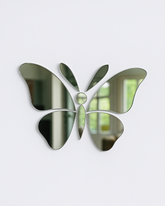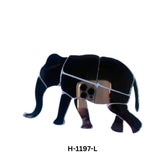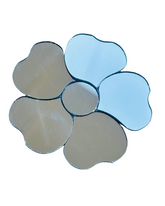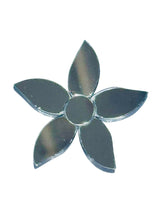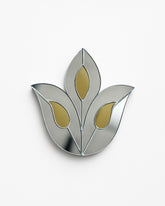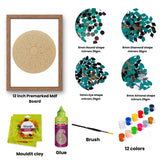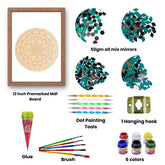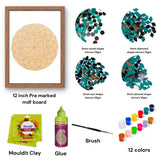Top 10 Indian Art Forms Using Mirror Glass: Reflecting Beauty and Tradition
Mirror glass has been an integral part of Indian art for centuries, adding a touch of elegance, sparkle, and depth to various traditional crafts. In this blog, we'll explore the top 10 Indian art forms that extensively use mirror glass, highlighting their unique features and cultural significance.
-
Kutch Embroidery
Description:
Kutch embroidery, originating from the Kutch region of Gujarat, is renowned for its intricate patterns and vibrant colors. Mirror glass pieces are embedded into the fabric to enhance the designs and create a shimmering effect.
Uses:
Traditional garments
Home décor items like cushion covers and wall hangings
-
Sheesha (Mirror) Work
Description:
Sheesha work, or mirror work, is a popular embroidery style in Rajasthan. Small mirrors are stitched onto fabric using colorful threads, creating stunning, reflective patterns.
Uses:
Traditional attire such as sarees and lehengas
Decorative items like table runners and bedspreads
-
Rogan Art
Description:
Rogan art, a rare and ancient craft from Gujarat, involves painting on fabric using castor oil and natural colors. Mirror glass pieces are sometimes incorporated to add a touch of sparkle.
Uses:
Wall art
Decorative textiles
-
Mud and Mirror Work (Lippan Kaam)
Description:
Lippan Kaam is a traditional mural art form from Gujarat, where artisans create intricate patterns on walls using a mixture of mud and camel dung. Mirrors are embedded in these patterns, creating a striking visual effect.
Uses:
Wall decorations in homes and temples.
-
Phulkari Embroidery
Description:
Phulkari, meaning "flower work," is a traditional embroidery style from Punjab. Mirror glass pieces are often used to embellish the floral patterns, adding depth and shine.
Uses:
Shawls and dupattas
Home décor items like tablecloths and curtains
-
Mirror Mosaic Art
Description:
Mirror mosaic art involves creating pictures and designs using small mirror pieces. This art form is widely practiced in various parts of India to decorate temples, palaces, and homes.
Uses:
Wall art
Decorative panels
-
Banjara Embroidery
Description:
Banjara embroidery, created by the nomadic Banjara community, features colorful threads and intricate patterns. Mirrors are frequently sewn into the fabric to enhance the designs.
Uses:
Traditional clothing
Home décor accessories
-
Mirror Inlay Furniture
Description:
Inlaying mirror glass into furniture is a popular art form in India. This technique involves embedding small mirror pieces into wooden surfaces to create intricate designs.
Uses:
Tables and chairs
Cabinets and dressers
- Toran Hangings
Description:
Torans are decorative door hangings made using fabric, beads, and mirror glass. They are traditionally used in Indian homes to welcome guests and ward off negative energy.
Uses:
Door and window decorations
-
Ganesh Wall Art
Description:
Mirror glass is often used in the creation of Ganesh wall art. Artists use mirrors to embellish images of Lord Ganesh, creating beautiful, reflective pieces of devotional art.
Uses:
Religious home décor
Temple decorations
-
Conclusion
Mirror glass plays a significant role in various Indian art forms, adding a unique touch of elegance and brilliance. From traditional embroidery and wall art to furniture and decorative hangings, the use of mirror glass enhances the beauty and cultural richness of Indian crafts. By exploring these top 10 art forms, you can appreciate the intricate artistry and creativity that mirror glass brings to Indian traditions.




